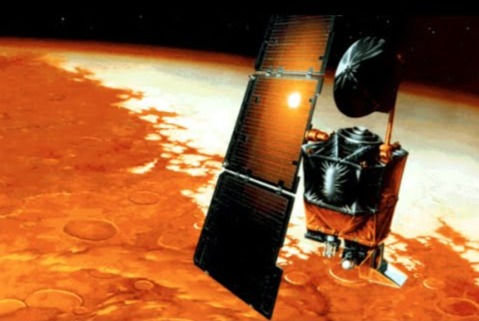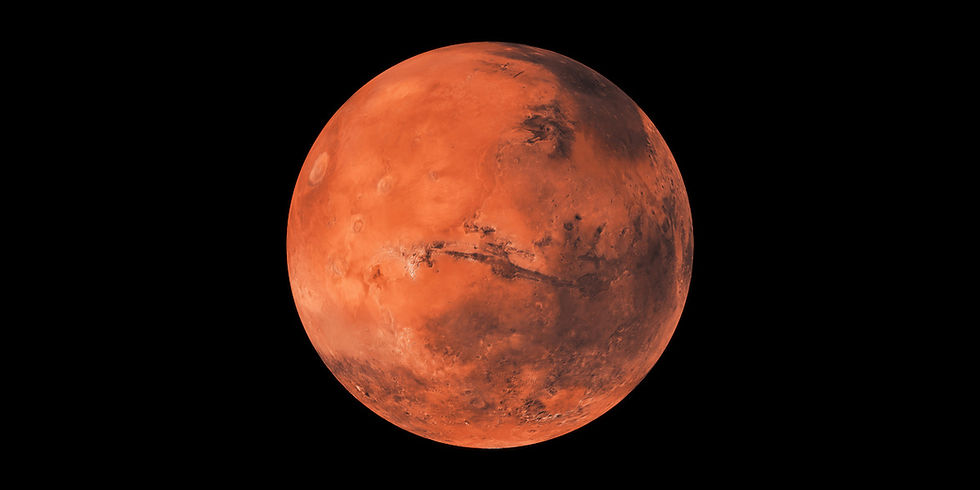The Devil is in the Detail
- deepak Gandepalli

- Mar 14, 2021
- 4 min read
Space exploration involves a tremendous effort from planning to launching and finally to retrieving information. There are a lot of minute things to be taken care of across all disciplines and departments through the timeline of a mission.
Even the slightest of errors can result in the mightiest of catastrophic disasters.
In this article, we shall look at 5 such bloopers that have happened due to tiny flaws.
1. Mirror, Mirror on the Hubble

Loved the picturesque images sent from Hubble? It is one of the most spectacular tech-marvels built by NASA and ESA, currently located about 547 kilometers above the earth and traveling at 5 miles per second. But even it had to go through some improvisations to do such a great work that it is doing at present.
During the 1980s NASA and ESA had put a heavy bet on the Hubble telescope which was launched on April 24, 1990. But within few weeks of launching, it sent pretty good images but not quite great for the price they put on it.
Scientists felt that something was wrong with the telescope and later figured that it couldn’t focus properly since the mirror had been ground to a wrong shape which led to spherical aberration!
“The problem was traced to miscalibrated equipment during the mirror’s manufacture. The result was a mirror with an aberration one-fiftieth the thickness of a human hair, in the grinding of the mirror.”reports said
Soon later, 5 pairs of corrective optics were built and installed on the Hubble by astronauts spacewalking in 1993. The Corrective Optics Space Telescope Axial Replacement (COSTA) instrument worked like a pair of glasses to a nearsighted person thus, solving the flaw.
2. The $150 Million Bar

On the 22nd of July, 1962, NASA launched the rocket, Atlas-Agena carrying Mariner 1, a flyby to venus which was proposed to collect data about its temperature and atmosphere.
Everything was good until 293s, after which the range safety officer gave the command to self-destruct over the Atlantic ocean.
The reason for the mission abortion was later revealed to be a failure in the radar system.
The radar system of Atlas Agena was comprised of 2 systems, the rate system, which was based on the velocity of the rocket, and the track system, which was based on the distance and angle from the antenna.
Quickly after the launch, the rate system failed which meant that the rocket had to depend only on the track system to maintain its trajectory.
But a simple code error spoiled the party for the scientists at NASA.
Back then, when there were no fancy programming languages and compilers, programmers had to manually write or type code using a typewriter in Fortran( an early language, stood for formula translator) which was later fed into a punchcard.
The code should have Ṙ̄ for representing the position derivative but Ṙ is what it had. Yes, it was missing an overbar! The Ṙ̄ takes the average of the values and gives an accurate value for the velocity.
But since the bar was missing, the system was fed with inconsistent information about the velocity which led to an erratic flight.
The missing bar cost NASA $18.5 million back then which currently is over $150 million!
But soon, NASA learned from its mistakes and a month later the code was corrected and Mariner 2 was sent, which actually worked really well.
3. A Nut can make you a NUT

Moving on to the era of modern computers, the 21st century, SpaceX, founded by Elon Musk in its newbie stage had its fair share of failures.
Postponed several times, the maiden launch of SpaceX's Falcon 1 was finally happening in march 2006 but the rocket lasted only 34 seconds after liftoff and fell into the pacific ocean catching fire.
“it was a picture-perfect flight except there was this seal leak that caused the fire”, Musk said.
The reason for the fallout of the mission was later figured out to be a nut!
It was known that the cause of the fire was a corroded aluminum nut that made the fuel leak into the main engine. The fire then caused a loss of pressure that shut down the engine.
Soon after this breakdown, SpaceX shifted towards using cheaper stainless steel nuts rather than aluminum ones for its future missions.
4.Upside Down

The next one is one of the most recent and spectacular failures, coming from Russia's government space agency, Roscosmos.
After a series of setbacks, in July 2013 Russia was geared up to launch Proton-M carrying 3 GLONASS satellites, which was the ‘Russian GPS’.
Soon after the launch, the rocket started dancing left and right and after 24 seconds it caught fire and fell onto Earth breaking apart.
On the brighter side of the incident was that no casualties were reported.
The preliminary report of the investigation indicated that the angular velocity sensors (having little arrows on them and pointing towards the top of the rocket), which played a crucial part in keeping the rocket upright were installed upside down!
The incorrect orientation of the sensors misinformed the rocket’s control system.
Attempts of correcting the flight trajectory by the onboard guidance system were made but in vain.
Soon after the failure, a major reorganization of the space agency was undertaken by the Russian government to get it back on track.
5. Wrong Units means NO Marks

This list wouldn’t be complete without mentioning the Mars climate orbiter.
In September 1999, NASA's Mars climate orbiter, after 10 months of travel solitarily to mars lost the signal from the ground station.
The trajectory showed that it had been destroyed after getting too deep into the atmosphere of Mars.
Further investigations shed the light on a metric mishap that led the mission into a disaster.
All the government agencies in the USA had to use the metric system for the calculation, so does NASA, but their contractor, Lockheed Martin, who built the orbiter, used English units in the ground-based computer, which was giving commands to the orbiter.
Lockheed calculated the thrust in pound second while NASA expecting them to be in SI units interpreted as newton second. As a result, the orbiter went much lower than what it has to and burned itself!










Comments